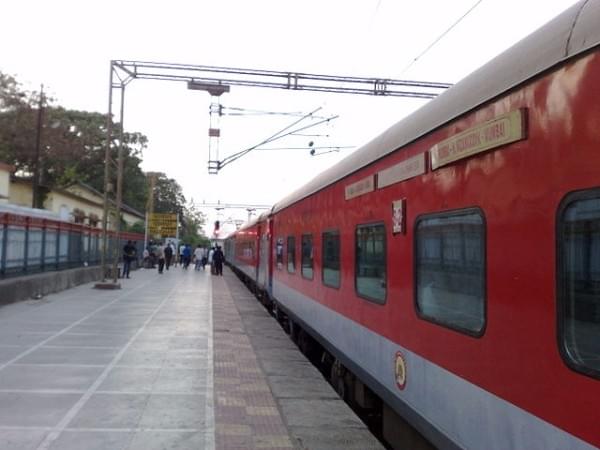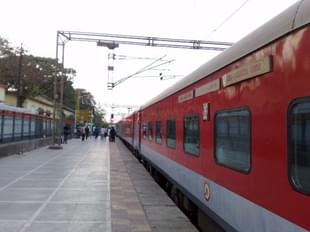Infrastructure
How Railways Can Save Hundreds Of Lives By Quickly Switching Over To LHB Coaches
Swarajya Staff
Aug 29, 2017, 07:16 PM | Updated 07:16 PM IST
Save & read from anywhere!
Bookmark stories for easy access on any device or the Swarajya app.


The Indian Railways and the minister in charge of the organisation, Suresh Prabhu, have faced flak in recent times, thanks to recurring accidents and the resulting casualties. This year the Indian Railways has suffered at least two major accidents, leaving over 50 dead and more than 100 injured. Not to forget, last year saw the Pukhrayan train derailment that led to 150 deaths – the deadliest train accident since a derailment killed 290 passengers in 1999.
What’s common to these accidents, essentially, is the derailment of coaches. Derailments may occur due to various reasons, such as track damage due to weather or usage, sabotage and even unsafe train speeds.
A review of pictures from accident sites where the casualty figures are high shows bogies severely damaged, capsized, piled up, sometimes even ripped open. The coaches used in these trains are predominantly what are referred to as “ICF bogies” in railways parlance. The “ICF” in the name stands for Integral Coach Factory, the organisation that has designed and produced coaches since the 1950s. While there have been design inputs from abroad and continuous improvements made over the years, the coaches themselves have been particularly notorious for resulting in high casualty figures during train derailments. Even in the Pukhrayan train derailment of 2016, the role of ICF coaches was brought out repeatedly in the media.
The lack of safety features and design vulnerability of ICF coaches have been known for some time. Back in 1995, contracts had been issued to Linke-Hofmann-Busch, now Alstom LHB GmbH, of Germany to design, produce and offer technology transfer for a new generation of coaches. These coaches have since been referred to as LHB bogies or coaches.
LHB coaches are significantly safer than ICF coaches for multiple reasons, including the superior design of the ‘couplers’, which help join two coaches to form a rake. The coupler design prevents ‘climbing’ or piling up of coaches during accidents. There are several other safety features known to altogether make the LHB coaches significantly safer than the ICF coaches. In view of the multiple accidents over the years, the railways has therefore repeatedly announced a complete switchover to LHB coaches since the late 1990s.
The trouble, however, is that the railways has inherited a large number of ICF coaches. (According to the latest report, this count is at 50,000, although the actual figure could be slightly lower.) Despite the obvious safety advantages of LHB coaches, the production agencies, that is, the coach factories, have continued to produce ICF coaches in large numbers until at least the last year.
The production of LHB coaches has meanwhile been ramped up ever so slowly. In 2013, nearly 20 years after the contracts for LHB coaches were issued, India produced 3,082 ICF coaches as against only 543 coaches of the safer LHB variety.
A series of accidents in 2016 forced the railways to accelerate the replacement of coaches. Pushed by the Railways Ministry, the factories churned out 1,697 LHB coaches in 2015-16. This number is likely to rise to 2,384 in 2017-18 and eventually to 3,025 in 2018-19.
It may perhaps come as a surprise, but the Indian Railways has continued the production of ICF coaches through the years, and will only fully discontinue production during the 2018-19 period. While some safety upgrades, like in the form of a new coupler design, have been incorporated in the newly produced ICF coaches, they continue to be inferior to LHB coaches, as admitted to by the railways in a press release.
Further, it will still be some years before the railways is able to fully replace all the existing (nearly at least 40,000) ICF coaches. Even at very high production runs of over 4,000 coaches, this process is likely to take a minimum of 10 years.
The reluctance to move away from ICF to LHB coaches may have to do with three reasons.
1. Inability or unwillingness to build production facilities for LHB coaches and dismantle those for the ICF ones.
2. Many of these coaches have a useful life of over 20 years. So the railways might be reluctant to decommission useful assets before they’re done for. We are after all talking of assets worth in excess of Rs 50,000 crore (calculated at scrap values of Rs 1 crore per ICF coach).
3. The cost. Writing in Swarajya in 2014, NITI Aayog member Bibek Debroy had provided a ball-park figure of Rs 3 crore for an LHB coach and only Rs 1.5 crore for an ICF one. At a cost difference of Rs 1.5 crore and a production of approximately 3,000 coaches a year, the overall cost difference would come up to Rs 4,500 crore for the Indian Railways per year. And this is only considering replacement without accounting for new requirements. Nevertheless, the fact that the railways has been producing older, relatively less safer coaches for more than one and a half decades since newer technologies emerged tells us about the organisational issues the Indian Railways is plagued with.
In any case, the organisation has decided to do away with ICF coaches entirely and the promises this time around seem earnest. The only question now is, how long will they really take to get rid of all the old ICF coaches?




